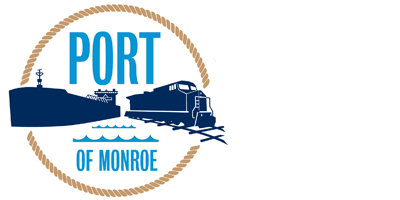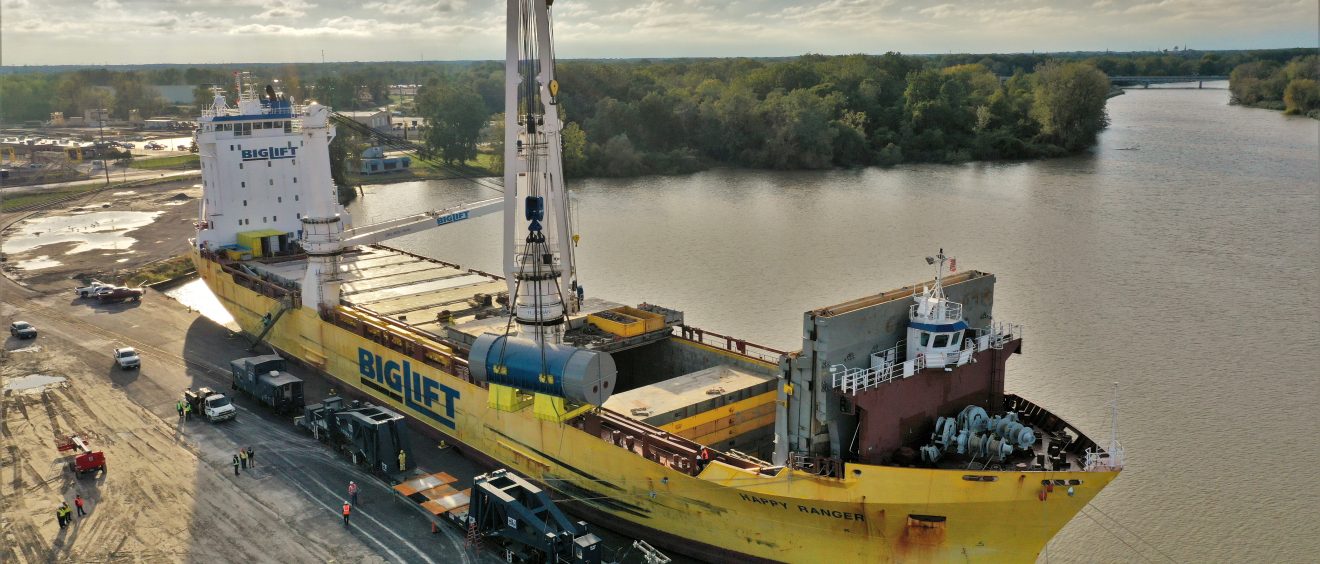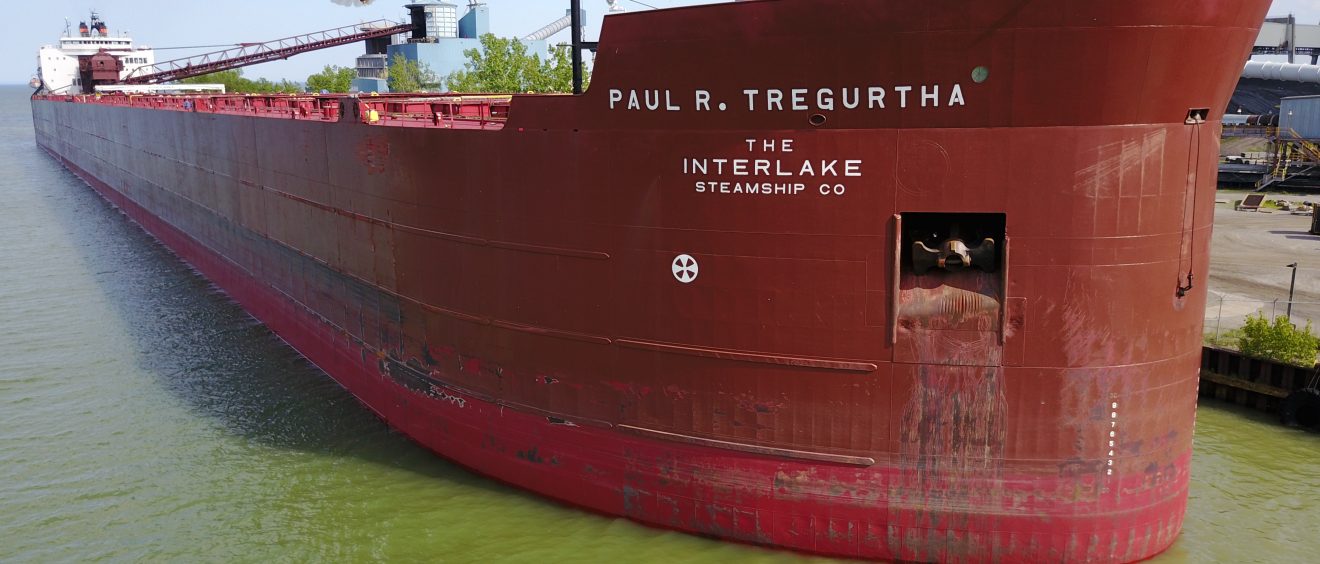The St. Lawrence Seaway, North America’s binational marine highway stretching 2,300 miles from the Atlantic Ocean to the Great Lakes, registered an 8.5 percent gain in year-over-year dry bulk cargo shipments in 2019. This highlights the Seaway’s ability to drive a diverse mix of commodities to and from Great Lakes ports.
The top-performing cargos through the 2019 Navigation Season include:
- Salt — 3,855,000 metric tons; 10.8%* increase
- Cement & Clinkers — 1,909,000 metric tons; 1.2%* increase
- Coke — 1,453,000 metric tons; 8.5%* increase
- Gypsum — 640,000 metric tons; 27.8%* increase
- Potash — 333,000 metric tons; 7.3%* increase
*Percentages rounded to nearest tenth
“Throughout the 2019 shipping season, American Great Lakes ports continued moving cargos at a consistent pace, achieved numerous benchmarks and historic moments, and made significant investments to maintain success in 2020,” said Steve Fisher, Executive Director of the American Great Lakes Ports Association.
The final total tonnage results – 38 million tons of commodities moved in 2019 – reflect an overall 6.6 percent decrease in Seaway-wide total tonnage compared to the 2018 season yet kept on pace with the Seaway’s five-year average.
Historic Year for ‘The Biggest Little Port’
Port Monroe laid the groundwork during a strong 2018 navigation season, including the introduction of a new state-funded riverfront dock, for continued success throughout the 2019 season.
In October 2019, Port Monroe handled a historic shipment — a deserved payoff for their efforts in increasing international inbound and outbound cargos — receiving what may be the most valuable single piece of cargo to have moved through the Seaway System. The M/V Happy Ranger delivered a stator — a device that converts a rotating magnetic field to electric current — from Rotterdam, Netherlands to the Port of Monroe. The record-breaking piece of cargo, due to value, will be used in a generator at DTE
Energy’s Fermi 2 Nuclear Power Plant in Newport.
That very same ship, M/V Happy Ranger, was then loaded with 42 wind tower segments manufactured at Ventower, a wind energy manufacturing company based in Monroe, and shipped to Peru, exemplifying what can only be described by Port Director Paul C. LaMarre III as “logistics perfection.”
Port of Cleveland Capitalizes on General Cargo, Invests in Future
The Port of Cleveland reported that general cargo tonnage increased by approximately 9 percent in the 2019 navigation season compared to 2018. “This increase was achieved despite the fact that our trans-Atlantic tonnage decreased by approximately 25 percent. Due to the forecasted continued stagnation in trans-Atlantic tonnage, the Port and our terminal operator, LOGISTEC, has shifted focus and secured new general cargo business from Canada, which directly contributed to the increase in our total general cargo tonnage,” said Port of Cleveland’s Chief Commercial Officer David Gutheil.
The Port also completed a major rehabilitation of their bulkhead at Cleveland Bulk Terminal, which will enable multiple vessels to be worked simultaneously and significantly improve loading and discharging efficiencies at that operation for years to come. The Port continues to expand its cruise vessel business, and in 2019 welcomed 28 passenger vessels. During the 2020 season, Cleveland expects to be the port of call for 40 passenger vessel calls to Cleveland.
Wind-Related Cargo Blows Port of Duluth-Superior Past Single-Season Record
The Port of Duluth-Superior finished this navigation season strong, achieving notable benchmarks with wind-related cargo and grain. In 2019, the Port set a single-season record, welcoming 306,000 freight tons of wind energy cargo. This haul eclipsed the previous high of 302,000 freight tons set in 2008. The Port also saw a surge of late-season grain, pushing their 2019 season total 15 percent over last season and more than 40 percent ahead of 2017.
Overall, it was an award-winning year for the Port of Duluth-Superior and its terminal operator (Duluth Cargo Connect). The Port collected its 18th Pacesetter Award for international tonnage increases, earned high marks in the Green Marine environmental performance report (ranking among the United States’ top 5 and No. 10 overall), and was named the 2019 Port/Terminal Operator of the Year by an international panel of judges with Heavy Lift and Project Forwarding International.
Port of Indiana-Burns Harbor Sees Positive Numbers with Grain
The Port of Indiana reported that, through the end of November, overall tonnage was down 4 percent from 2018. However, as the final numbers come in for the season, the trend points to a considerable increase in grain shipments compared to last season.
“As we collect data for the entire 2019 navigation season, it is clear tonnage results reflect the more challenging conditions encountered this year compared to 2018,” said Port of Indiana-Burns Harbor Director Ian Hirt. “It was a steady year that was hampered by trade uncertainty as well as difficult navigational conditions.”
In 2019, the Port of Indiana-Burns Harbor received the 2019 PCA Industrial Award, hosted Indiana’s first U.S. Navy vessel commissioning ceremony of the USS Indianapolis, and is making significant investments for the future including two new railyards, 4.4 miles extension to the port’s 14-mile rail network, construction of a new 2.3-acre cargo terminal with multimodal connections, improvements to the dock apron and approximately 1200-foot dock expansion, and a new 6-acre truck marshaling yard.


